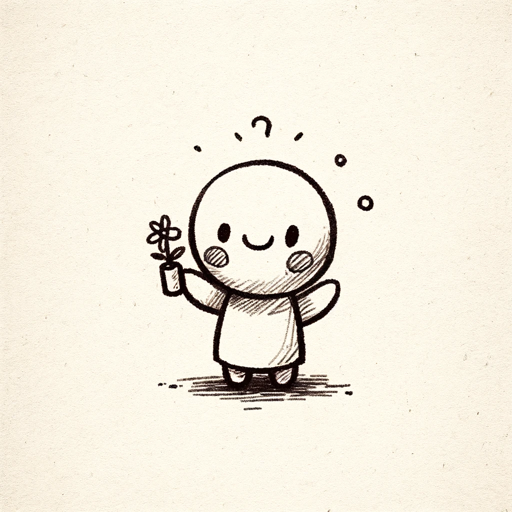Design Sequence Diagram & Implement-tool for sequence diagrams and code
AI-powered sequence diagrams and API code generation.
Generate Sequence Diagram and Rest API to implement it
generate a sequence diagram for online shopping app
Help me create a sequence diagram
generate a sequence diagram for Banking application
Related Tools

In-Chat UML Diagram Visualizer
I create and visualize UML diagrams in-chat with PlantUML.
SQL+ 🔴VISUALIZE 🔴
🔴VISUALIZE 🔴DATABASES🔴 Design & Optimize SQL queries. Particularly good at SQL.

Diagram Creator [UPDATED]
Expert in transforming ideas into professional diagrams

UML Diagram Expert
Expert in software diagram creation using UML. Plantuml, Mermaid, D2

IT Architecture Diagram Generator
To create IT Architecture diagram for the requirement given

Class Diagram Creator
I generate class diagrams from software concepts.
20.0 / 5 (200 votes)
Introduction to Design Sequence Diagram & Implement
Design Sequence Diagram & Implement is a specialized tool designed to assist software engineers, architects, and developers in the process of creating sequence diagrams for system design and implementation. The primary function of this tool is to generate clear, concise, and accurate sequence diagrams that visually represent the flow of operations within a software system. By focusing on interactions between various components, such as objects or services, the tool aids in understanding, documenting, and communicating the behavior of software systems. Moreover, it bridges the gap between design and implementation by generating code templates, particularly in Java Spring Boot, which align with the generated sequence diagrams. For instance, in an e-commerce application, the tool could be used to create a sequence diagram for the checkout process, detailing interactions between the user, shopping cart, payment service, and order management system.

Main Functions of Design Sequence Diagram & Implement
Sequence Diagram Generation
Example
A developer needs to design the authentication flow in a web application.
Scenario
The tool allows the developer to define interactions between the user, authentication service, and database, generating a sequence diagram that visually represents the login process, including steps like user input validation, database query for user credentials, and session creation.
Code Generation for Spring Boot
Example
A team is building a RESTful API for a financial application and needs to implement CRUD operations for managing transactions.
Scenario
After designing the sequence diagram for transaction management, the tool can generate Java Spring Boot code for the respective API endpoints, including methods for creating, reading, updating, and deleting transactions. This speeds up the development process by providing a starting point that aligns with the design.
Linking Design and Implementation
Example
An architect needs to ensure that the design of a microservices-based system is accurately implemented by developers.
Scenario
The tool helps by allowing the architect to create detailed sequence diagrams for inter-service communication, which developers can then use as a reference to implement service interfaces and interaction logic, ensuring consistency between design and implementation.
Ideal Users of Design Sequence Diagram & Implement
Software Architects
Architects responsible for high-level system design will benefit from this tool as it helps them create detailed sequence diagrams that capture the flow of operations across various components in a system. The tool also aids in ensuring that the design is faithfully implemented by generating corresponding code templates.
Developers
Developers, especially those working on backend systems using Java Spring Boot, will find this tool useful for translating design diagrams into code. It allows them to focus on coding specific business logic rather than boilerplate code, which is automatically generated based on the design.
Technical Leads
Technical leads overseeing multiple projects can use this tool to ensure that design specifications are consistently followed throughout the development process. By using sequence diagrams to map out critical interactions, they can better communicate requirements and review implementations against the design.

Steps to Use Design Sequence Diagram & Implement
Step 1
Visit aichatonline.org for a free trial without login, no need for ChatGPT Plus.
Step 2
Determine the software system you want to model, focusing on a specific use case or functionality.
Step 3
Use the provided commands to generate a sequence diagram, which can be easily copied and pasted into an online sequence diagram tool like sequencediagram.org.
Step 4
Review and refine the generated sequence diagram, ensuring it accurately represents the system interactions and processes.
Step 5
Generate Spring Boot RESTful API code based on the chosen components, integrating with MongoDB if needed, to implement the designed system functionality.
Try other advanced and practical GPTs
Plagarism Remover
AI-powered Rephrasing for Plagiarism-free Content

Watermark Remover
AI-Powered Image Watermark Remover.

Remove AI plagiarism
AI-powered originality for your content.

Forex Scalp Trader Unlocked
AI-Powered Forex Scalping for Precision Trades

FigmaTo React Code Expert
AI-powered Figma to React code conversion

Go Golang
Empower your coding with AI-driven Go development.

DnDGPT - Full Canvas Battle Map Maker
AI-powered full-canvas battle map creator.

Graph Theory
AI-powered graph theory for real-world solutions.

Music Theory
AI-powered music theory insights.

Theory of Computation
AI-powered insights into computation theory.

Meeting Summary and Action Item Specialist
AI-powered summaries and action items in seconds.

Hand-drawn illustration GPT
AI-powered doodle creator for everyone

- Software Design
- API Development
- System Modeling
- Backend Coding
- Sequence Diagrams
Frequently Asked Questions about Design Sequence Diagram & Implement
What is the primary purpose of Design Sequence Diagram & Implement?
This tool is designed to help users create detailed sequence diagrams and implement them in Spring Boot RESTful APIs. It's particularly useful for designing and coding software systems quickly and accurately.
Can I use this tool without prior coding experience?
Yes, the tool is user-friendly and guides you through the process of creating sequence diagrams and generating corresponding code, making it accessible even for those with limited coding experience.
Which programming languages and frameworks does this tool support?
The tool primarily generates Java code using the Spring Boot framework, and it supports integration with MongoDB for database management.
Is it possible to customize the generated code?
Absolutely. The generated code serves as a starting point, which you can customize further to fit your specific requirements and business logic.
What types of software systems can I model with this tool?
You can model a wide range of systems, including web applications, microservices, and backend services. The tool is versatile and supports various use cases.